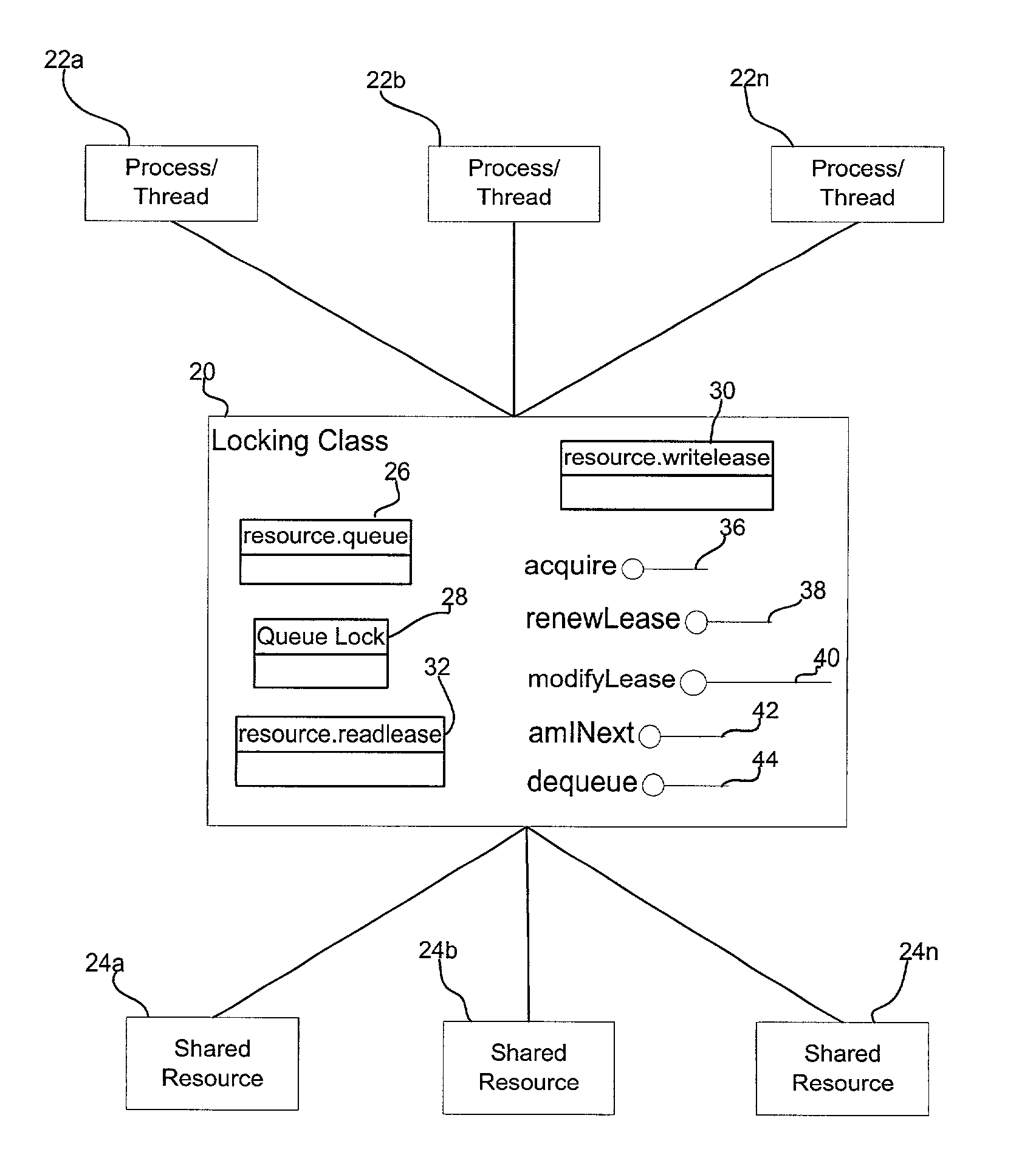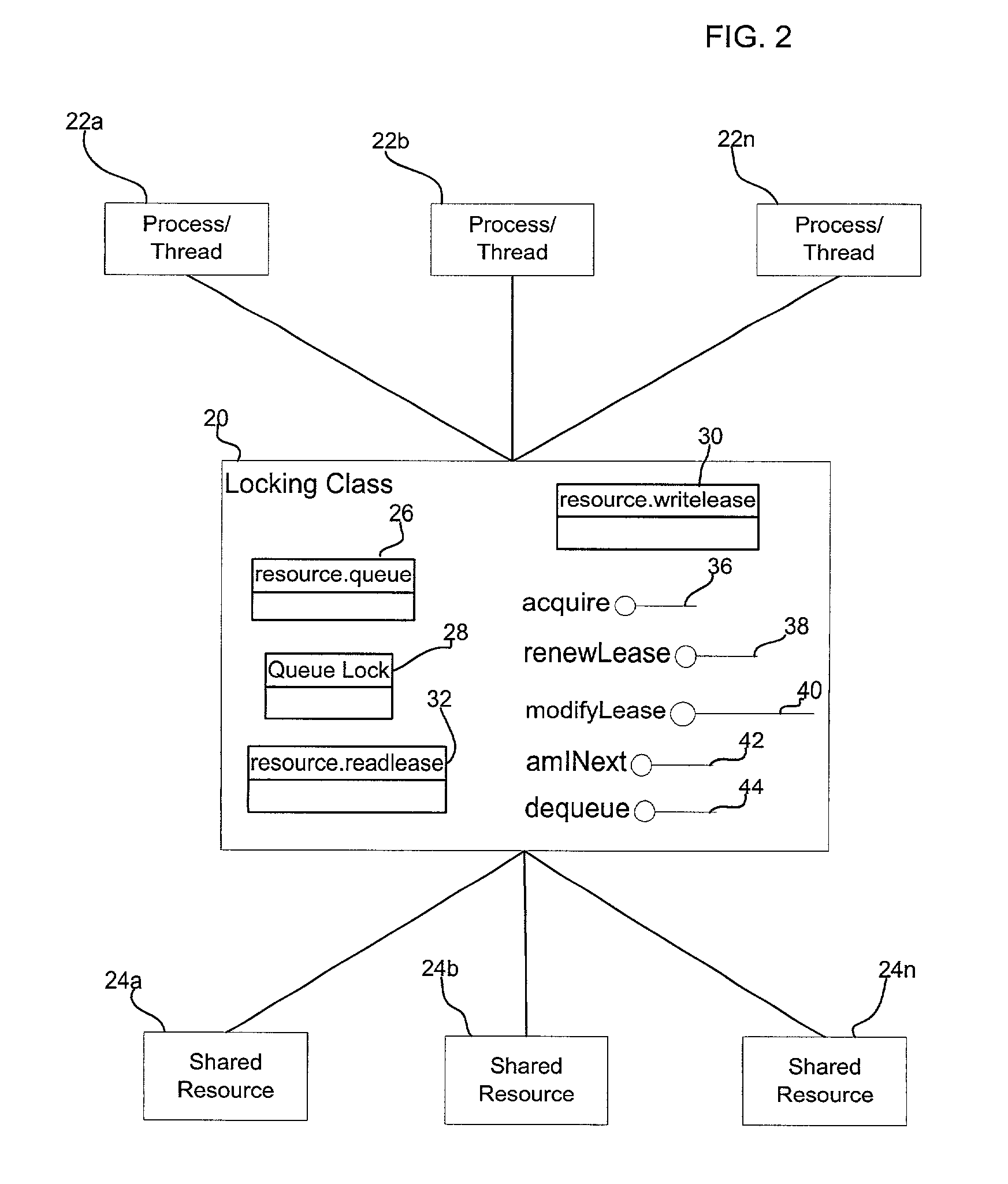Method, system, program, and data structure for implementing a locking mechanism for a shared resource
a technology of locking mechanism and shared resource, applied in multi-programming arrangements, instruments, data processing applications, etc., can solve problems such as difficulty in implementing locking mechanisms, cumbersome approach, and inability to allow two processes to simultaneously proceed with mutually exclusive atomic operations
- Summary
- Abstract
- Description
- Claims
- Application Information
AI Technical Summary
Benefits of technology
Problems solved by technology
Method used
Image
Examples
Embodiment Construction
[0020]In the following description, reference is made to the accompanying drawings which form a part hereof and which illustrate several embodiments of the present invention. It is understood that other embodiments may be utilized and structural and operational changes may be made without departing from the scope of the present invention.
[0021]FIG. 1a illustrates a computing environment in which aspects of the invention are implemented. An application 2 is written in a cross-platform computer language, such as the Java programming language, that is intended to execute on multiple operating systems 4a, 4b . . . 4n. A virtual machine 6, such as the Java Virtual Machine (JVM), converts the application statements to basic instructions, which in the case of the Java language comprises Java bytecodes. The virtual machine 6 includes an adaptor component 8a, 8b . . . 8n for each operating system 4a, 4b . . . 4n on which the cross-platform language executes. The adaptor components 8a, 8b . ....
PUM
 Login to View More
Login to View More Abstract
Description
Claims
Application Information
 Login to View More
Login to View More - R&D
- Intellectual Property
- Life Sciences
- Materials
- Tech Scout
- Unparalleled Data Quality
- Higher Quality Content
- 60% Fewer Hallucinations
Browse by: Latest US Patents, China's latest patents, Technical Efficacy Thesaurus, Application Domain, Technology Topic, Popular Technical Reports.
© 2025 PatSnap. All rights reserved.Legal|Privacy policy|Modern Slavery Act Transparency Statement|Sitemap|About US| Contact US: help@patsnap.com



